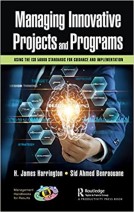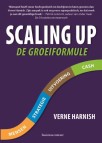ABOUT INNOVATION
Most often you need to be knowledgeable and experienced for being in business, you need to know the fundaments and have a solid professional base. But what about creating totally new business. About products and services that did not exist before?
For this, you need to think out-of-the-box. Being experiences does not help there.
There, you need boldness, curiosity, and open-mindedness, and most of all imagination. In this type of business, you need to think big! Something that belongs to the mind of children. In this area being knowledgeable and experienced is more or less a handicap.
For innovation, one has to give up the idea of top-down malleability.
Existing knowledge and experience may even be a handicap.
Innovation is a bottom-up process. It is the result of human interaction, not of human design, created by trial and error, hardly ever the result of conscious design.
Under the heading 'About Innovation' we explore the theories and models that have been created about innovation during the latest decades.
At first we will, on the page Success or Failure confront you with the fact that 80%-90% of all innovation efforts end up as a failure.
Next, on the page The nature of Innovation, we will argue that Innovation is a bottom-up process, the result of human interaction, and not of a 'top-down' design process. This makes it very hard to plan the result of an innovation process.
On the page The innovation Process we describe how the interaction process between people may lead to the inspirational spark that strikes and how a team may come to beautiful new ideas. This SECI model is the team perspective of innovation, but that is but one perspective. We also give our attention to the perspective of the individual participant to the process, the organisational perspective, the market perspective, the consumer perspective and the societal perspective.
In Teamroles in Innovation we describe the teamrole model Ten Faces of Innovation. The use of this model is the same as the Belbin team role model: you need a a complete team with all team roles, in able to become successful.
A lot of books have been written about innovation, and there are many models and theories. The is even an ISO standard for Innovation Management (where also LDpe has contributed).
This standard, de ISO 56000 Standards for Guidance and Implementation is recently (31/7 2022) published commercially by James Harrington.
To realise innovation top-down remains very difficult anyway.
But, in order to survive, organisations need to innovate.
Despite the fact that innovation seems untameable, it is possible for an organisation to improve it's capability for innovation. And, it is possible to increase the chances of innovation by fostering a better innovation culture an climate.
And it is possible to compose highly creative teams (for instance with LDpe's Advanced Team Design tool).
In An Innovative Organisation we refer to a number of publications that help us to give the innovation process a place in the larger, well established organisations, who just because of their organisedness, often have a difficulty to provide sufficient space for the innovation process.
Knowledge of the literature in the field may be useful, but many of the books, especially the American ones, make us believe the following their method is a guarantee for success. For example the standard reference book Scaling Up, gives us the impression of a cookery book that leads to the most exquisite meals.
Unfortunately, reality is more stubborn!
The fact is, that more than 95% of the enterprises fail when the is the need to Scale-Up the organisation.
Please read the section From startup to Scale-Up.






